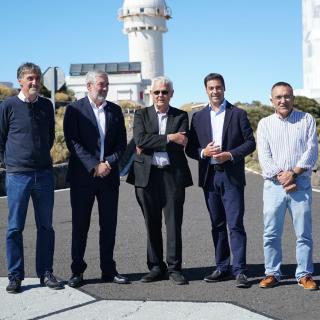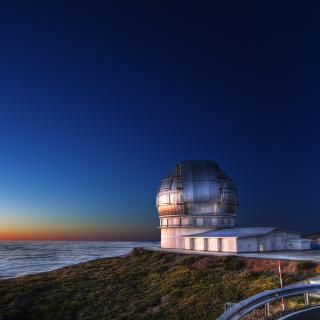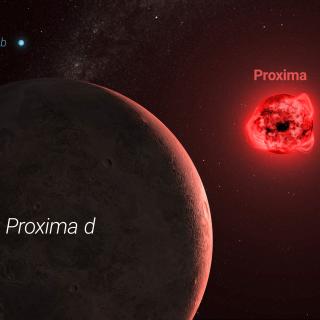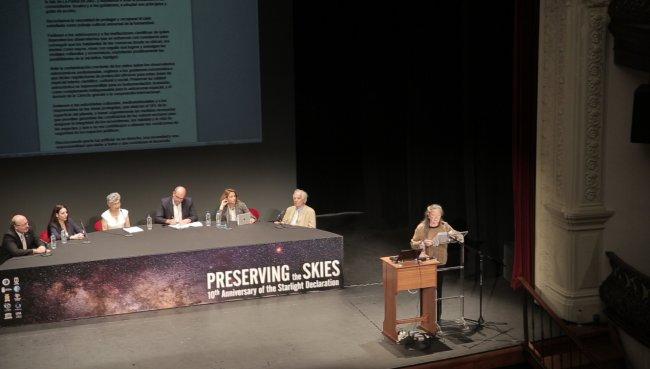It may interest you
-
 El Lehendakari del Gobierno Vasco, Imanol Pradales Gil, y el presidente del Gobierno de Canarias, Fernando Clavijo Batle, han visitado las instalaciones del Observatorio del Teide del Instituto de Astrofísica de Canarias (IAC) donde han sido recibidos por el director del centro, Valentín Martínez Pillet que ha estado acompañado por personal científico y técnico. Esta visita subraya el interés y la apuesta compartida por ambos gobiernos por la excelencia científica y la colaboración en proyectos de alta tecnología como los que abandera el IAC desde Canarias. Con dos de los observatorios másAdvertised on
El Lehendakari del Gobierno Vasco, Imanol Pradales Gil, y el presidente del Gobierno de Canarias, Fernando Clavijo Batle, han visitado las instalaciones del Observatorio del Teide del Instituto de Astrofísica de Canarias (IAC) donde han sido recibidos por el director del centro, Valentín Martínez Pillet que ha estado acompañado por personal científico y técnico. Esta visita subraya el interés y la apuesta compartida por ambos gobiernos por la excelencia científica y la colaboración en proyectos de alta tecnología como los que abandera el IAC desde Canarias. Con dos de los observatorios másAdvertised on -
 The Instituto de Astrofísica de Canarias (IAC) is one of the international researches centres which is following actively the asteroid 2024 YR4 which has been qualified by the United Nations (UN) as potentially dangerous, because it has a 1.5% probability of impacting the Earth during 2032.The asteroid was discovered in 2024 and has an estimated size of between 40 and 90 metres. Given these figures, the UN has activated the protocols of planetary defence to obtain more accurate estimates of the orbit, the size and the threat which might be presented by 2024 YR4. The protocols of the UN areAdvertised on
The Instituto de Astrofísica de Canarias (IAC) is one of the international researches centres which is following actively the asteroid 2024 YR4 which has been qualified by the United Nations (UN) as potentially dangerous, because it has a 1.5% probability of impacting the Earth during 2032.The asteroid was discovered in 2024 and has an estimated size of between 40 and 90 metres. Given these figures, the UN has activated the protocols of planetary defence to obtain more accurate estimates of the orbit, the size and the threat which might be presented by 2024 YR4. The protocols of the UN areAdvertised on -
 The new infrared spectrograph NIRPS, built with the participation of the Instituto de Astrofísica de Canarias (IAC) and installed on the 3.6-metre telescope at ESO’s La Silla Observatory in Chile, has achieved its first scientific results, with four articles published today in the journal Astronomy & Astrophysics and one more accepted for publication. The data confirm its ability to detect Earth-like planets in the infrared for the first time with a precision better than one metre per second. One of the papers, led by IAC researcher Alejandro Suárez Mascareño, confirms the presence of aAdvertised on
The new infrared spectrograph NIRPS, built with the participation of the Instituto de Astrofísica de Canarias (IAC) and installed on the 3.6-metre telescope at ESO’s La Silla Observatory in Chile, has achieved its first scientific results, with four articles published today in the journal Astronomy & Astrophysics and one more accepted for publication. The data confirm its ability to detect Earth-like planets in the infrared for the first time with a precision better than one metre per second. One of the papers, led by IAC researcher Alejandro Suárez Mascareño, confirms the presence of aAdvertised on
